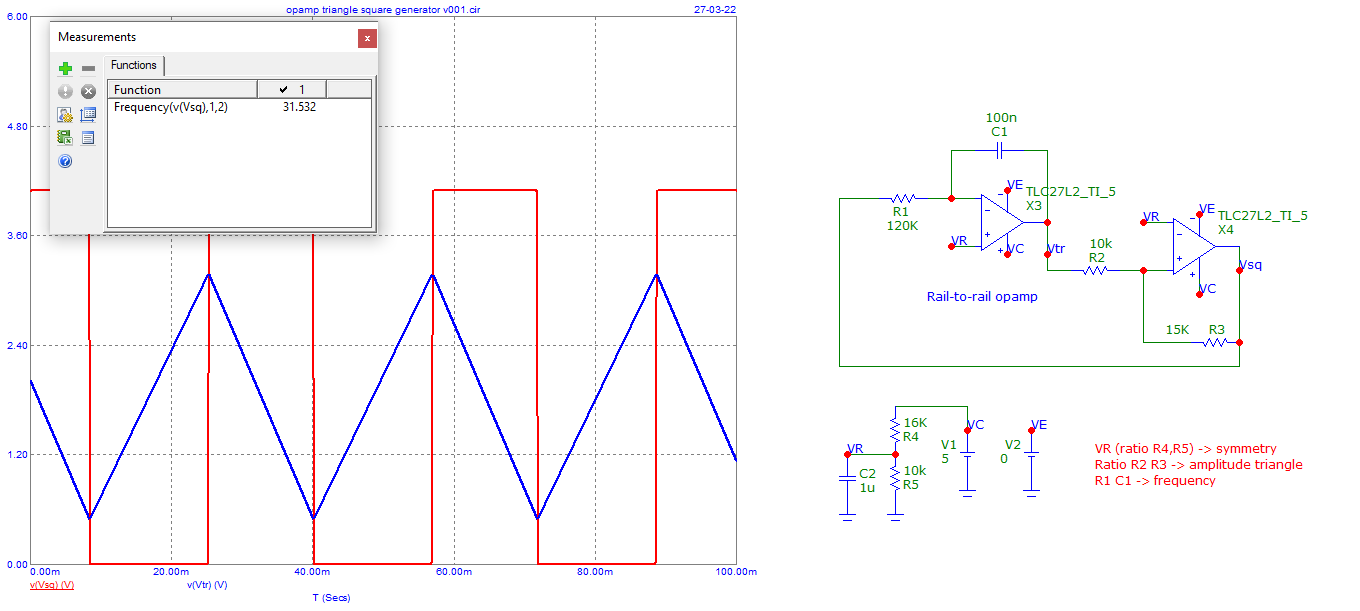I am trying to generate a 30Hz triangle wave from a MSP430FR5994 MCU (specifically with the MSP430FR5994 Development Kit. The reason why I am trying to do this is for a Continuous Wave, Frequency Modulated sensors, and I need the triangle wave to modulate a VCO (I used the CD4046) for the output signal, then compare the output triangle wave with a demodulated input from the returning signal. And because my MCU doesn't come with an in-build DAC.
Simulations with LTSpice suggest that using the PWM as a square wave then rectifying that wave to a triangle wave yields this result. Since for my purposes, I need the triangle wave to remain as linear in its rate of change as possible, I don't think this method is viable.
Instead, I'm going to try to use the PWM as a DAC, using it like how other people program their DACs to be undervolted DC signals, only this time the output signal will be varying. Low pass filter to clear out the PWM signals.
Does that seem like a reasonable way of doing things? Or should I just buy a DAC IC? Learning to interface with a DAC IC seems like more challenging to my untrained eyes. If any more information is needed, please let me know.




